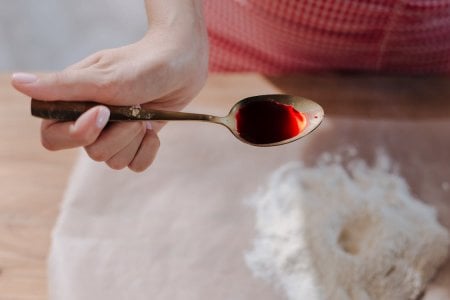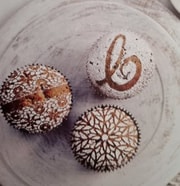Food colouring found in popular snacks a potential inflammatory bowel disease trigger, study says
- Replies 4
If you’re a fan of foods such as Doritos, Skittles, and Pepsi, well, we have quite a story for you.
A study conducted by researchers from McMaster University in Canada has revealed that one of the most widely used food colourings — Red 40, also known as Allura Red — could potentially be a significant cause of the development of inflammatory bowel diseases (IBD).
‘These findings have important implications in the prevention and management of gut inflammation,’ said Dr Waliul Khan, Lead Researcher of the study published in Nature Communications.
'What we have found is striking and alarming, as this common synthetic food dye is a possible dietary trigger for IBDs.’

The researchers took a closer look at the health effects of the food additive and examined the results of their study through mice as subjects.
The mice were given Red 40 for three months, and they found that mice who occasionally consumed the dye were more prone to developing colitis (inflammation of the colon).
Meanwhile, the study found that mice that ingested ‘intermediate’ levels of the dye did not exhibit any noticeable change.
The researchers pointed out that normal human consumption of the dye is more similar to intermediate levels seen in the study.
This means that to see any of the ill effects reproduced in humans, a person would have to consume Red 40 in massive amounts.
That said, the researchers warn of the possible effects of consuming the dye, which can weaken a person’s gut defences and interfere with the normal absorption of essential nutrients, water, and electrolytes.
The dye was also shown to increase serotonin levels in the mice’s guts.
In humans, 95 per cent of serotonin comes from the intestines.

While usually associated with pleasure, serotonin plays a different role in our digestive system. There, it is an important hormone in the absorption of nutrients and how quickly food passes through our guts.
Elevated levels of serotonin have been linked to diarrhoea and discomfort in people with IBD.
Around 80,000 Aussies are estimated to have IBD.
Dr Khan also issued an additional warning on food dyes: ‘The literature suggests that the consumption of Allura Red also affects certain allergies, immune disorders and behavioural problems in children, such as attention deficit hyperactivity disorder.’
A study done in the US in 2021 displayed a link between the consumption of food dyes and hyperactivity in ‘some’ children.
The UK Food Standards Agency lists Red 40 among artificial colours linked to hyperactivity in children.
But back home, Food Standards Australia New Zealand (FSANZ) says on its website that exposure to added colouring in food and drinks ‘does not pose a public health and safety concern on children’.
Well, while the jury remains out and about (perhaps on holiday leave?), it wouldn’t hurt to exercise moderation in consuming foods with artificial colouring. Better safe than sorry, right?
Meanwhile, if you’re still up for more studies, you might like to check these out:
So, what do you think of this study? Has it given you any reason to rethink your usual diet?
Share your thoughts below!
A study conducted by researchers from McMaster University in Canada has revealed that one of the most widely used food colourings — Red 40, also known as Allura Red — could potentially be a significant cause of the development of inflammatory bowel diseases (IBD).
‘These findings have important implications in the prevention and management of gut inflammation,’ said Dr Waliul Khan, Lead Researcher of the study published in Nature Communications.
'What we have found is striking and alarming, as this common synthetic food dye is a possible dietary trigger for IBDs.’

A Canadian study found that a red food colour widely used in popular snacks caused IBD in mice fed large quantities. Stock Image Credit: Pexels/Ron Lach
The researchers took a closer look at the health effects of the food additive and examined the results of their study through mice as subjects.
The mice were given Red 40 for three months, and they found that mice who occasionally consumed the dye were more prone to developing colitis (inflammation of the colon).
Meanwhile, the study found that mice that ingested ‘intermediate’ levels of the dye did not exhibit any noticeable change.
The researchers pointed out that normal human consumption of the dye is more similar to intermediate levels seen in the study.
This means that to see any of the ill effects reproduced in humans, a person would have to consume Red 40 in massive amounts.
That said, the researchers warn of the possible effects of consuming the dye, which can weaken a person’s gut defences and interfere with the normal absorption of essential nutrients, water, and electrolytes.
The dye was also shown to increase serotonin levels in the mice’s guts.
In humans, 95 per cent of serotonin comes from the intestines.

The McMaster University study warned that ingestion of Red 40 may have bad effects on gut health. Stock Image Credit: Pexels/Sora Shimazaki
While usually associated with pleasure, serotonin plays a different role in our digestive system. There, it is an important hormone in the absorption of nutrients and how quickly food passes through our guts.
Elevated levels of serotonin have been linked to diarrhoea and discomfort in people with IBD.
Around 80,000 Aussies are estimated to have IBD.
Dr Khan also issued an additional warning on food dyes: ‘The literature suggests that the consumption of Allura Red also affects certain allergies, immune disorders and behavioural problems in children, such as attention deficit hyperactivity disorder.’
A study done in the US in 2021 displayed a link between the consumption of food dyes and hyperactivity in ‘some’ children.
The UK Food Standards Agency lists Red 40 among artificial colours linked to hyperactivity in children.
But back home, Food Standards Australia New Zealand (FSANZ) says on its website that exposure to added colouring in food and drinks ‘does not pose a public health and safety concern on children’.
Well, while the jury remains out and about (perhaps on holiday leave?), it wouldn’t hurt to exercise moderation in consuming foods with artificial colouring. Better safe than sorry, right?
Meanwhile, if you’re still up for more studies, you might like to check these out:
- Advancements in Alzheimer’s research: Queensland Brain Institute conducts ‘stepping stone’ trial using ultrasound
- Could your favourite foods be harming your brain? Watch out for these 'ultra-processed' items!
So, what do you think of this study? Has it given you any reason to rethink your usual diet?
Share your thoughts below!







